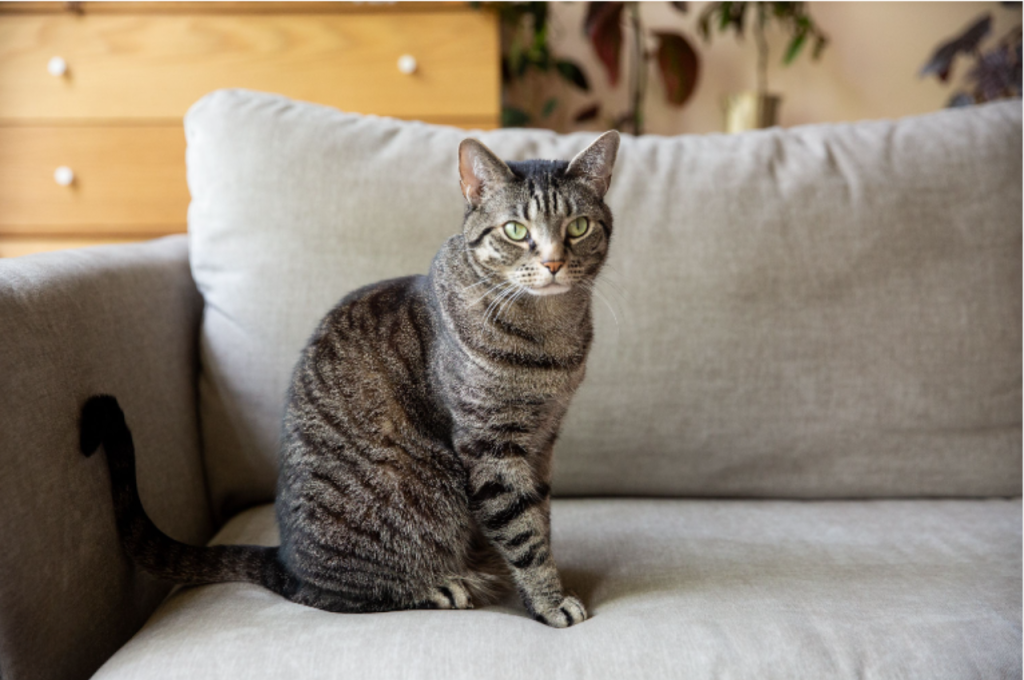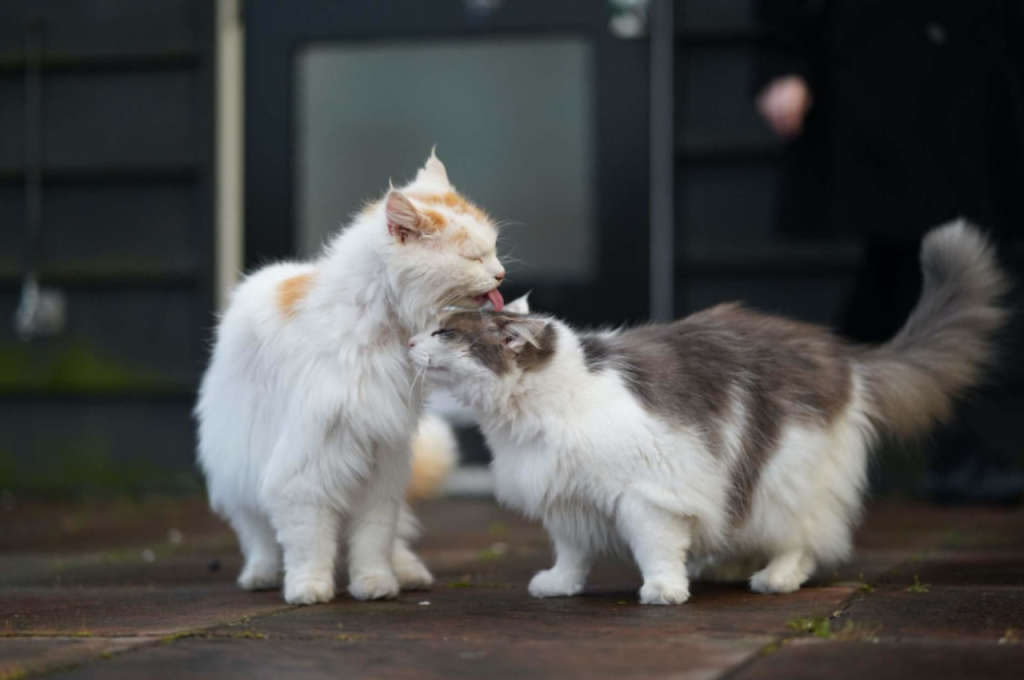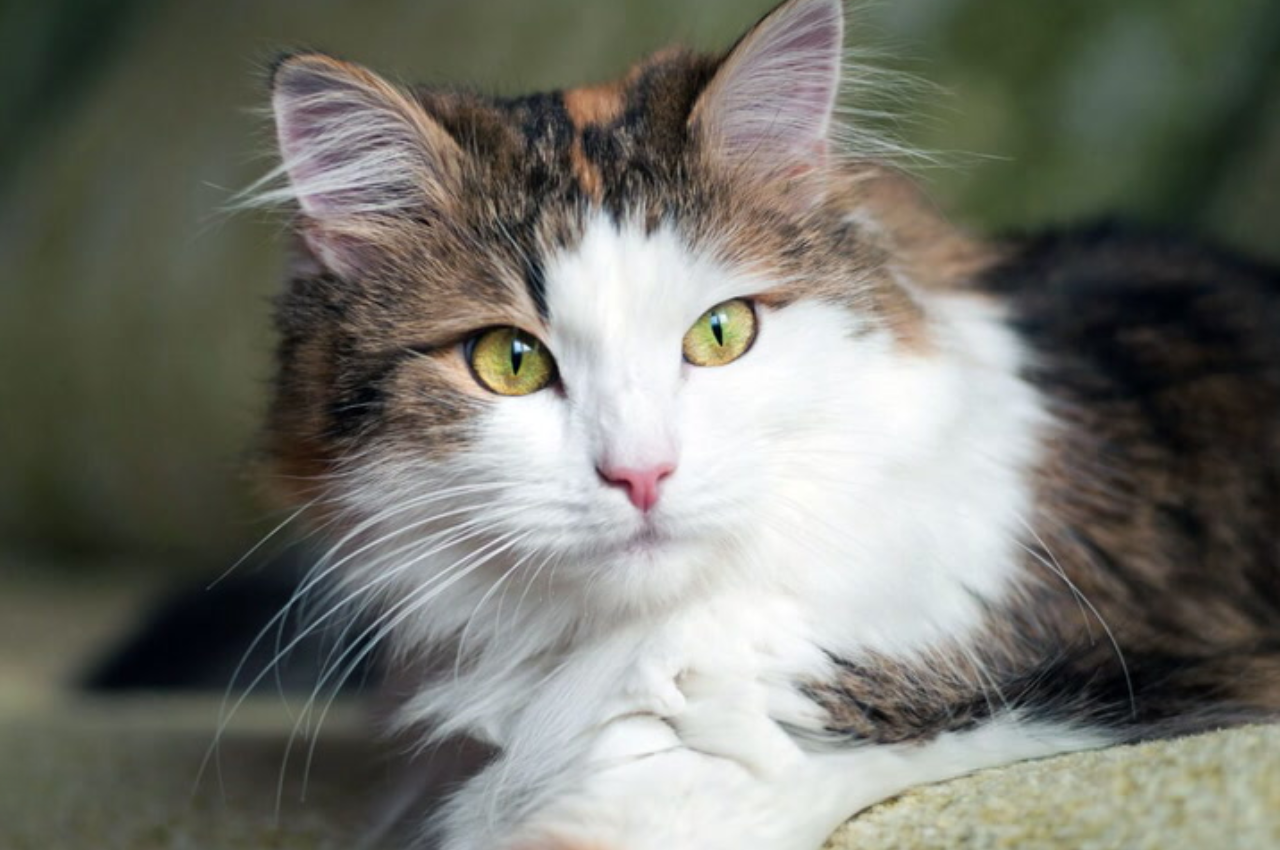Your cat’s breed can be determined through various methods including its physical traits, behavior, and lineage. However, the easiest and most accurate way to determine your cat’s breed is through a genetic test.
A genetic test can analyze your cat’s DNA and provide information on its breed, ancestry, and potential health risks. As a pet owner, it’s natural to want to know more about your beloved animal companion. One question that many cat owners have is “What breed is my cat?
Knowing your cat’s breed can help you better understand its personality, appearance, and potential health concerns. While physical traits and behavior can offer clues, the most accurate way to determine your cat’s breed is through a genetic test. We’ll explore some of the ways you can identify your cat’s breed and the benefits of genetic testing.
The Mystery of Cat Breeds
Cats are fascinating creatures with a wide range of breeds that are as unique as their personalities and behaviors. Even though cats have been domesticated for thousands of years, the mystery of determining a cat’s breed remains an enigma to many cat owners.

The Importance of Knowing Your Cat’s Breed
Knowing your cat’s breed can help you better understand your pet’s personality traits, behavior, and health issues that may arise later in life. Each breed has specific characteristics that can impact their quality of life, and by knowing which breed your cat belongs to, you can provide them with the right food, exercise, and medical care they need to stay healthy and happy.
The Difficulty in Identifying A Cat’s Breed
Identifying a cat’s breed can be a daunting task, especially for those without a background in cat genetics. Unlike dogs, which have distinct physical characteristics that distinguish them from other breeds such as coat color and body shape, cats’ breeds are less clear. Some breeds share similar physical appearances, making it challenging to determine their specific lineage accurately. Additionally, mixed-breed cats, also known as domestic shorthair or domestic longhair, can inherit a unique blend of traits from their lineage, making it even more challenging to identify their breed.
Despite the challenges, several physical characteristics can help identify a cat’s breed, such as the size and shape of their ears, the length and texture of their fur, and their eye color. If you’re unsure about your cat’s breed, the best option is to consult with a veterinarian or a cat breed expert to help identify your cat’s breed accurately.
By identifying your cat’s breed, you can better understand your pet’s unique personality and behaviors, provide them with the right care, and strengthen the bond between you and your cat.
Physical Traits to Look For
To determine what breed your cat is, pay attention to their physical traits, such as their size, coat texture, and eye color. Look for breed-specific characteristics like Siamese blue eyes or Persian long hair. With careful observation, you can identify your cat’s breed and better understand their unique needs.
If you are wondering what breed your cat is, examining its physical traits can give you some clues. While there are over 100 cat breeds recognized around the world, most domestic cats do not have a pedigree. However, certain physical characteristics such as coat color and pattern, body type and shape, and facial features can give you an idea of what breed your cat is.
Coat Color and Pattern
One of the most visible physical traits of a cat is its coat color and pattern. Domestic cats come in a wide variety of coat colors, including black, white, cream, gray, and orange. Some breeds, such as the Siamese, have distinctive coats with color points, while others like the Maine Coon have long and fluffy fur. The coat pattern is also an important factor in identifying a cat’s breed. For example, the Bengal breed has a coat that resembles a leopard, while tabbies have bold stripes or swirling patterns.
Body Type and Shape
A cat’s body type and shape can give you an idea of its breed. Some breeds, such as the Devon Rex, have long and slender bodies with narrow heads, while others like the Scottish Fold have compact and rounded bodies with short legs. If your cat has long legs and a sleek body, it may be a breed with a hunting heritage like the Abyssinian or the Egyptian Mau.
Facial Features
Facial features can also be a useful indicator of a cat’s breed. Some breeds, such as the Persian cat, have flat faces and small noses, while others like the Exotic Shorthair have round faces and big eyes. Siamese cats have distinctive almond-shaped eyes and triangular faces, while British Shorthairs have round faces and chubby cheeks.
Behavioral Characteristics to Consider
Deciding on the breed of your cat is important for several reasons. It helps you understand specific health needs, behavior patterns, and personality traits unique to that breed. Each breed has varying characteristics that make them stand out. Behavioral characteristics such as temperament, activity level, and personality should be considered when determining the breed of your cat.
Temperament and Personality
Cats, in general, have a reputation for being independent, but that doesn’t mean all cats have the same temperament and personality. Some breeds are known to be more sociable and affectionate than others, while some prefer solitude and are less affectionate.
- Most affectionate cat breeds: Siamese, Ragdoll, and Persian are known to be some of the most affectionate cat breeds
- Most Independent: Breeds like the Scottish Fold and the American Shorthair tend to be more independent and do not require as much attention as other breeds.
Activity Level
Cats have varying activity levels, and their breed is a contributing factor. Some have high energy levels and require constant stimulation while others are more laid-back and prefer snoozing for long periods.
- High Energy Breeds: Bengals, Abyssinians, and Maine Coons are known to have high energy levels and require plenty of playtime
- More Relaxed Breeds: Persians, Ragdolls, and British Shorthairs tend to have a more relaxed demeanor and prefer lounging on the sofa.
Understanding your cat’s breed characteristics will help you decide on the best nutrition, exercise, and lifestyle to keep them healthy and happy. It will also help you build a closer bond with your furry friend and provide a better quality of life for both of you.
Tools for Identifying Your Cat’s Breed
Identifying your cat’s breed can be a challenging task, but there are a few tools that can help you out. Cat breed identifier websites and DNA test kits are two great options to consider. With these tools, you can determine the genetic makeup of your feline friend.
As a cat owner, you may have wondered about the breed of your furry friend. Knowing your cat’s breed can help you better understand its personality traits and potential health issues. There are several tools available to help you identify your cat’s breed, including DNA testing, veterinarian assistance, and online breed databases.
DNA Testing
DNA testing is one of the most accurate ways to determine your cat’s breed. With a simple swab of your cat’s cheek, you can send their DNA to a lab and get a comprehensive report about their breed mix. Some popular DNA testing companies for cats include Wisdom Panel and Basepaws.

Veterinarian Assistance
Your veterinarian can also be a valuable resource in identifying your cat’s breed. They have extensive knowledge about different cat breeds and can use physical characteristics, such as coat color and body type, to make an educated guess about your cat’s breed.
Online Breed Databases
Several online breed databases can help you identify your cat’s breed. These databases allow you to input information about your cat’s physical appearance and behavior to narrow down potential breeds. Some popular online breed databases for cats include Cat Breeds List and The International Cat Association.
Common Breeds and Their Traits
If you’re wondering what breed your cat is, you’re not alone. Many cat owners find it difficult to determine their cat’s breed, especially if they’ve adopted a stray. However, some breeds have distinct features that make them easier to identify. In this article, we’ll discuss the common breeds of cats and their physical traits.
Siamese
- Originated in Thailand
- Distinctive blue eyes and pointed fur
- Long, slim, and muscular body
- Affectionate and vocal
Persian
- Originated in Iran (formerly Persia)
- Long, silky fur
- Flat face with round eyes and snub nose
- Quiet and gentle personality
Bengal
- Originated in the U.S. through the crosses between Asian leopard cats and domestic cats
- Distinctive marbled or spotted coat
- Athletic and agile body
- Intelligent, curious, and vocal breed
Sphynx
- Originated in Toronto, Canada
- Distinctively hairless with wrinkled skin
- Large ears and striking eyes
- Warm and affectionate personality
Maine Coon
- Originated in North America (Maine)
- Large and muscular with a shaggy coat
- Majestic appearance with tufted ears, furry paws, and bushy tail
- Friendly, loyal, and intelligent
Mixed Breed Cats
Mixed-breed cats can be difficult to identify due to their unique genetic makeup. Without a DNA test, it can be challenging to determine your cat’s specific breed or breeds. However, knowing their physical traits and personality can give you a better idea of their lineage.
When it comes to identifying what breed is your cat, mixed breeds can be a bit more difficult to identify. Mixed breeds simply mean that your cat is a combination of two or more breeds, which makes it difficult to identify the exact breed. But that doesn’t mean it’s impossible. Determining the breed of your cat can be done by observing its traits and characteristics to identify what dominant breed traits it may have inherited. Let’s take a closer look at why mixed breeds can be more difficult to identify and how to determine the predominant breed traits.
Why Mixed Breeds Can Be More Difficult to Identify
Mixed breeds typically have several different breeds in their ancestry, so it can be challenging to determine the primary breeds. Physical appearance and behavior can change from generation to generation, and sometimes, traits from one breed can be more dominant than others. Plus, the vast majority of cats that end up in animal shelters are mixed breeds, making it even more challenging to determine their ancestry. That’s why it’s best to rely on a combination of factors when attempting to determine the breed of your mixed-breed cat.
Determining Predominant Breed Traits
Determining the breed of your mixed breed cat is not an exact science, but you can start by looking at their physical characteristics. Some breeds have unique facial features, eye colors, and ear shapes. By observing these traits, you may be able to identify which breed your cat may have inherited dominant traits from. You can also look at your cat’s behavior, such as whether they are social or quiet and reserved. Some breeds are known for being more outgoing than others, and this can give you a clue as to their ancestry.
Another approach is to ask your veterinarian or a cat specialist to give their professional opinion. An expert may be able to identify certain traits or features that may indicate the breed of your mixed-breed cat. DNA testing is also an option, but it can be costly and may not be entirely accurate. Determining what breed is your cat is not as simple as it seems, especially when it comes to mixed breeds. However, with observation, research, and the help of an expert, you can get a better idea of what breeds may have contributed to your furry friend’s unique genetic makeup.
The Benefits of Knowing Your Cat’s Breed
Knowing your cat’s breed can provide numerous benefits, such as understanding their personality traits and potential health issues they may face. This knowledge can also assist in selecting the appropriate food, toys, and grooming tools for your beloved pet.
Identifying your cat’s breed can help you take better care of your furry friend. It gives you valuable information that you can use to tailor care, training, and nutrition to your cat’s specific needs. Additionally, learning about your cat’s breed can help you identify potential health issues. Knowing your cat’s breed also allows you to connect with other cat owners of similar breeds, creating a network of like-minded pet owners who can share valuable insights and advice.
Identifying Potential Health Issues
Identifying your cat’s breed can give you insights into common health issues that are associated with that breed. For example, Persian cats are more prone to respiratory issues, while Siamese cats may have gastrointestinal problems. By knowing your cat’s breed, you can take steps to prevent or manage these health problems.
Tailoring Care and Training to Specific Needs
Different breeds have different personalities and behavior patterns. Knowing your cat’s breed can give you insights into what kinds of training and care will work best for your furry friend. For example, some breeds are more social than others, while some may require more exercise or mental stimulation.
Connecting With Other Cat Owners of Similar Breeds
Knowing your cat’s breed can also help you connect with other cat owners of similar breeds. This can give you access to a community of like-minded pet owners who can share their experiences and advice. You can find groups on social media or meetups in your area that are focused on specific breeds, allowing you to connect with other cat lovers who have similar pets.

So, whether you’re a first-time cat owner or a seasoned pro, identifying your cat’s breed can have numerous benefits. It can help you take better care of your furry friend, prevent potential health issues, and connect with other pet owners.
Conclusion
Now that you have a better understanding of how to identify your cat’s breed, you can impress your friends with your feline knowledge. Remember to pay attention to distinct physical characteristics, and behavior traits, and take advantage of online resources. Knowing your cat’s breed can help you better understand their needs and provide them with proper care.
Understanding your cat’s breed can also assist you in building a stronger bond with your furry friend. So go ahead, and start exploring and discovering more about your cat’s unique breed!
